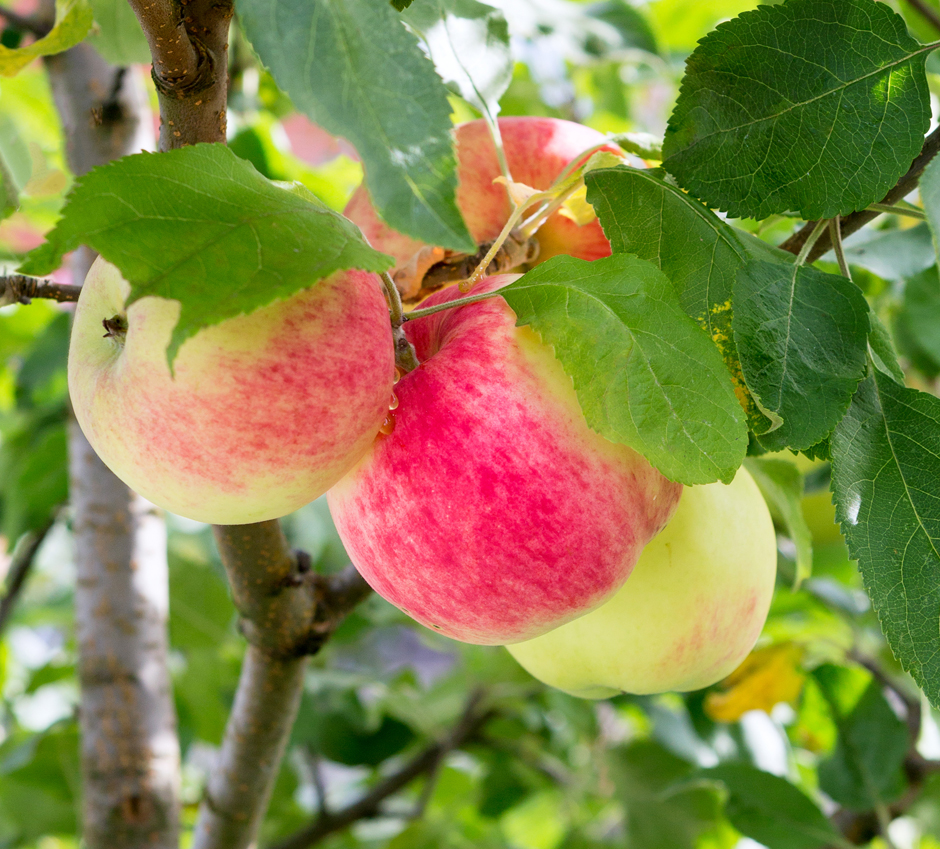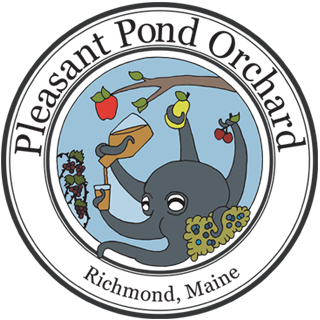
How We Grow
Conventional, traditional, organic, natural, sustainable, biodynamic, carbon sequestration. These words and more are used and misused by agriculture. Pleasant Pond Orchard believes the buzz should come from the pollinators, not the words.
Our house sits in the middle of the orchard. We live and play under the trees. The birds and the bees buzz about the orchard. Pleasant Pond Orchard strives to grow high quality fruits through cutting edge sustainable farming practices. We let the grasses and flowers grow wild under the trees and between the rows to promote diversity. We believe nature is a beautiful mess.
The Orchard is more than rows of trees. Clovers, insects, grasses, moss, fungi, bacteria and more live here. It’s a large and complex system. Our goal is to nudge the system toward favoring the fruits. Humans can’t grow apples, that’s impossible. But what we can do is provide the best environment for our trees to grow delicious fruit.
We do that by promoting soil health. Healthy soil is diverse soil. We want our rows full of different species. Clovers fix nitrogen. Brassicas root deep to break up the soil for better aeration and drainage. Comfreys also send roots far into the earth and bring micro nutrients to the surface where they’ll be available to tree roots. Cover crops sown midsummer die in the fall and become fertilizer.
Something as simple as mowing affects soil health. Mowing too often favors the grasses. They tend to suppress fungal growth and their roots suppress aeration. We do a spring mow to break up last fall’s leaves as soon as the snow melts. Then, we don’t mow again till Summer Solstice. We want the plants to flower, form seed heads and become carbon rich. Waiting to mow builds hummus, sequesters carbon and promotes diversity.
Our spray model also promotes tree health. Kaolin clay sprayed on trees creates a protective cover around the fruit so bugs go somewhere else to do their dirty work. Neem oil, fish emulsions and blackstrap molasses provide foliar food for the trees and the arboreal microorganisms we want to encourage. Each row has an unsprayed tree that is our sacrificial target. If we let the pests attack a few trees, hopefully they leave the rest of the trees alone.
We hang pheromone strips covered with sticky goo in trees to trap insects. Mating disruption is an expensive alternative to spraying pesticides but less poison is worth it. Plus, the trees look festive when we hang Christmas tree decorations in July.
Daffodils, garlic and chives planted around the trees keep some of the rodents away from the tender bark of our young trees. We leave the pruned branches on the orchard floor all winter so rabbits and deer can eat them rather than the bark and buds on the trees. In the spring, we put those branches through a chipper. The mulch encourages fungal growth.
Mycorrhizal fungi are our fungal friends who connect the roots of trees. Humans still have a lot to learn in this area but we do know that complicated networks of mycelium form symbiotic relationships with trees, trading sugars, carbons and nutrients. They help trees share resources amongst themselves and promote soil chemistry. We’re excited whenever we see the fungus among us on the orchard floor.
This isn’t the easiest way to grow fruits. We could make more money by spraying chemical fertilizers, pesticides and fungicides. A higher percentage of our harvest would be cosmetically perfect. But at what cost? We refuse to use the massive chemicals required. It isn’t good for the planet, the trees or the humans. We don’t have all the answers. We don’t even know all the questions. What we are certain of is that we feel good about eating foods grown this way. You can, too.
